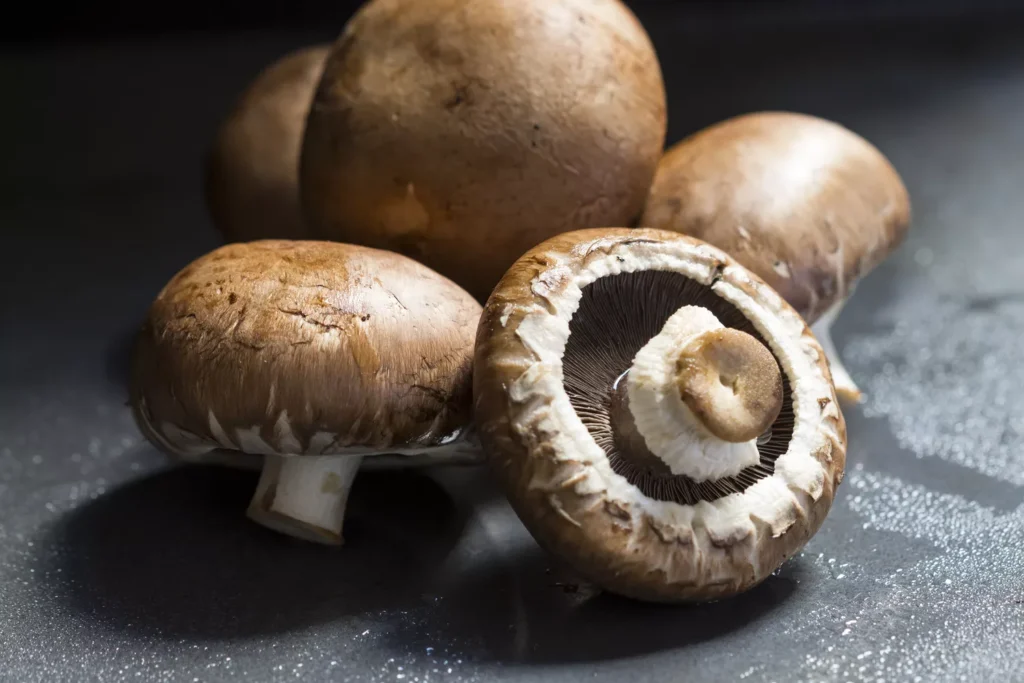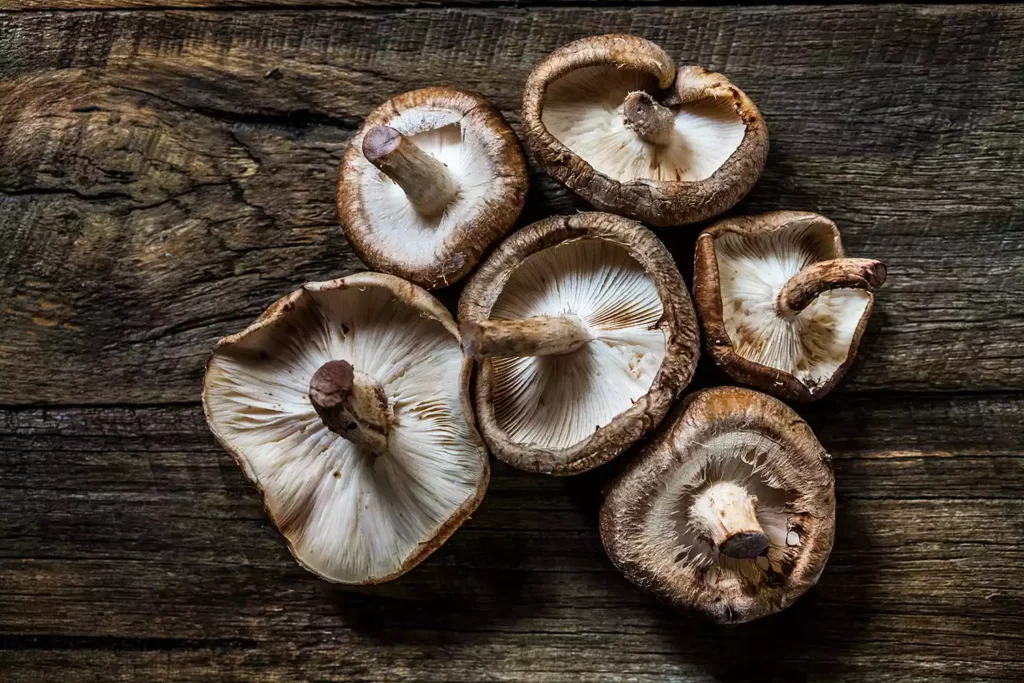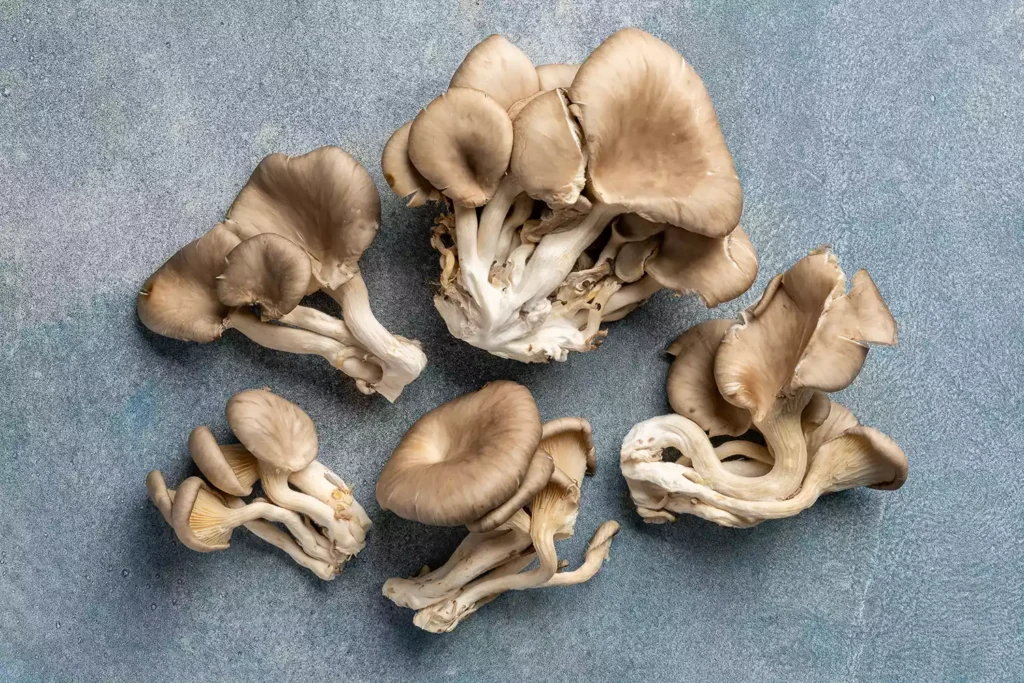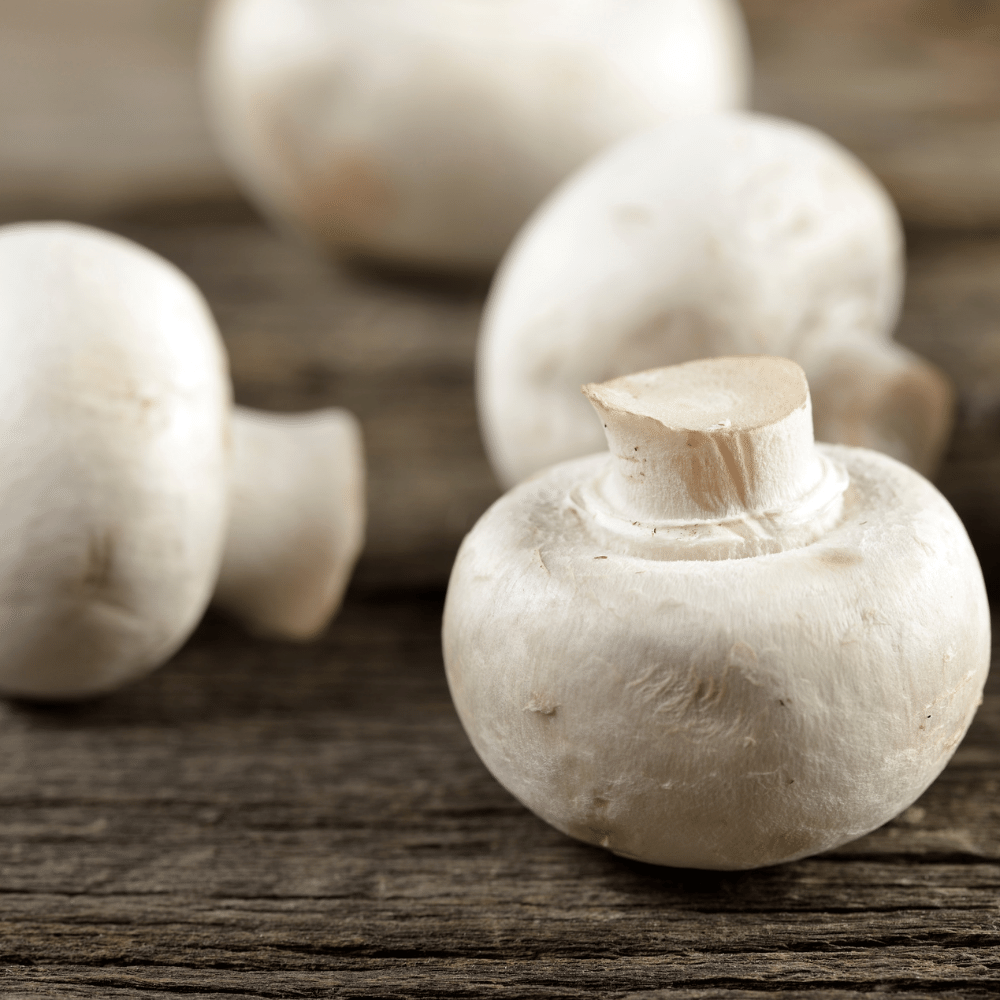Button mushrooms are a popular ingredient in many dishes, from soups to salads and stir-fries.
They’re easy to find at most grocery stores and they’re relatively inexpensive compared to other types of mushrooms.
But what if you don’t have button mushrooms on hand?
Or maybe you just want to try something new?
No worries!
There are plenty of alternatives that can be used as substitutes for button mushrooms.
In this article, I will share with you the five best substitutes for button mushrooms so that you can keep your recipes delicious and exciting.
What Are Button Mushrooms?

Button mushrooms, also known as white mushrooms, are a type of edible fungus belonging to the Agaricus bisporus species.
They are the immature form of the fungus, and are characterized by their small size, white color, and rounded shape.
Button mushrooms are the most commonly consumed mushrooms in the world, and are widely used in a variety of dishes.
Button mushrooms are harvested when they are still young and small, and are usually about 1 to 2 inches in diameter.
They have a mild, earthy flavor, and a slightly chewy texture.
Button mushrooms are a good source of dietary fiber, vitamins, minerals, and antioxidants.
They are also low in calories and fat, making them a healthy addition to any diet.
Button mushrooms can be eaten raw, cooked, or canned.
They are often used in soups, salads, stir-fries, and sauces.
They can also be grilled, roasted, or sautéed.
Button mushrooms are a popular ingredient in many dishes, including pizza, pasta, and risotto.
Button mushrooms are also related to cremini mushrooms and portobello mushrooms.
Cremini mushrooms are slightly larger than button mushrooms, and have a darker color and a more intense flavor.
Portobello mushrooms are the largest and most mature form of the Agaricus bisporus species, and have a meaty texture and a deep, earthy flavor.
The 5 Best Substitutes For Button Mushrooms
Button mushrooms are a popular ingredient, but if you can’t find them, don’t worry – there are several other options.
Here we look at five alternatives that will offer a similar taste and texture:
1 – Cremini Mushrooms

Cremini mushrooms, also known as baby bella or baby portobello mushrooms, are the same variety as white button mushrooms and portobello mushrooms, but are in between the two in terms of age.
They are slightly more mature than white button mushrooms, but still younger than portobello mushrooms.
This means that they have a similar flavor to white button mushrooms, but are slightly more flavorful.
They are also smaller in size than portobello mushrooms, making them a great substitute for button mushrooms in recipes.
Cremini mushrooms are a great option for adding a rich, earthy flavor to dishes, and they are also a great source of dietary fiber, vitamins, and minerals.
2 – Portobello Mushrooms

Portobello mushrooms are an excellent substitute for button mushrooms when you don’t have them on hand.
They are much larger in size than button mushrooms, with a thick, fleshy texture and a deep, earthy flavor.
Portobello mushrooms are great for grilling, broiling, and stuffing, and can also be used as a meat substitute in sandwiches and burgers.
They are a great way to add a savory, umami flavor to any dish.
3 – Shiitake Mushrooms

Shiitake mushrooms are an incredibly versatile and flavorful ingredient that can be used in a variety of dishes.
Native to East Asia, these mushrooms have been cultivated and consumed around the world for centuries.
In some forms of traditional medicine, shiitake mushrooms are considered to have medicinal properties.
They are an excellent replacement for button mushrooms when you don’t have them on hand.
Shiitake mushrooms have a unique flavor that is earthy and slightly sweet.
They are a great addition to soups, stews, stir-fries, and other dishes.
They can also be used as a meat substitute in vegetarian dishes.
When cooked, shiitake mushrooms become tender and juicy, making them a great addition to any dish.
Shiitake mushrooms are also a good source of dietary fiber and protein.
Additionally, shiitake mushrooms contain compounds that may help boost the immune system and reduce inflammation.
When shopping for shiitake mushrooms, look for ones that are firm and have a dark brown color.
Avoid any mushrooms that are slimy or have a strong odor.
Store them in a paper bag in the refrigerator and use them within a few days.
To prepare them, simply wipe them clean with a damp cloth and slice or dice them as needed.
4 – Oyster Mushrooms

Pleurotus ostreatus, commonly known as the oyster mushroom, oyster fungus, hiratake, or pearl oyster mushroom, is a popular edible mushroom that has been cultivated for centuries.
It was first grown in Germany during World War I as a way to supplement food supplies, and since then has become a widely cultivated mushroom around the world.
Oyster mushrooms are a great substitute for button mushrooms when they are not available.
Oyster mushrooms have a mild, slightly sweet flavor and a velvety texture that makes them a great addition to many dishes.
They can be used in soups, stews, stir-fries, and other dishes, and they can also be grilled, roasted, or fried.
Oyster mushrooms are easy to grow and can be grown indoors or outdoors.
They can be grown on logs, straw, sawdust, or other materials, and they can be harvested in as little as two weeks.
They are also relatively resistant to pests and diseases, making them a great choice for beginner mushroom growers.
5 – White Mushrooms

White Oyster Mushrooms, scientifically known as Pleurotus Ostreatus, are a type of mushroom that can range in color from white, pearl, beige, and gray.
Unlike many other mushrooms, which typically thrive in humid and cold environments, White Oyster Mushrooms prefer warm and dry conditions and are most commonly found in the summer months.
They are easily identifiable by their fan-like shape and their white, velvety texture. White Oyster Mushrooms are a great substitute for Button Mushrooms, as they have a similar texture and flavor.
They are also very versatile, as they can be used in a variety of dishes, from soups and salads to stir-fries and casseroles.
They can also be cooked in a variety of ways, such as sautéed, grilled, or roasted.
White Oyster Mushrooms are a great addition to any meal, as they are low in calories and fat, and are a good source of dietary fiber, vitamins, and minerals.
FAQ
What mushroom is closest to button mushroom?
The mushroom that is closest to the button mushroom is the Portobello mushroom. Although they have a similar texture and flavor, Portobellos are much larger since they are actually the same type of mushroom, just in a more mature form.
Are button mushrooms the same as white mushrooms?
Yes, button mushrooms are the same as white mushrooms. Button mushrooms, also known as cremini, white, or common mushrooms, are the most widely available and affordable mushrooms, making them a popular choice for many recipes. They can be either white or brown in color.
Is shiitake and button mushroom the same?
No, shiitake and button mushrooms are not the same. Portobello mushrooms are the mature form of button mushrooms when white and crimini mushrooms when brown, and are native to grasslands in Europe and North America. On the other hand, shiitake mushrooms are an edible mushroom native to East Asia, and are cultivated and consumed in many Asian countries.
Do button mushrooms have another name?
Agaricus bisporus, commonly known as button mushroom, table mushroom or cultivated mushroom, is an edible basidiomycete fungus that is found in grasslands, fields and meadows in Europe and North America. It has since spread to many other parts of the world and is now one of the most widely cultivated mushrooms. Therefore, the answer to the question is yes, button mushrooms have another name.
Conclusion
In conclusion, button mushrooms are a versatile ingredient that can be used in a variety of dishes.
However, if you don’t have button mushrooms on hand, there are a few other types of mushrooms that can be used as a good substitute.
The five best substitutes for button mushrooms are cremini mushrooms, portobello mushrooms, shiitake mushrooms, oyster mushrooms, and white mushrooms. Each of these mushrooms has a unique flavor and texture that can be used to replace button mushrooms in recipes.
Using different types of mushrooms is a great way to add complexity and depth to dishes.
So, the next time you’re in a pinch, reach for one of these substitutes and give it a try.

The 5 Best Substitutes For Button Mushrooms
Ingredients
- Cremini Mushrooms
- Portobello Mushrooms
- Shiitake Mushrooms
- Oyster Mushrooms
- White Mushrooms
Instructions
- Pick your favorite substitute from the list above.
- Follow cooking directions for your selected substitute with the proper ratio of ingredients.
Hi, I'm Benjamin. I love cooking, long walks, and my girlfriend! Here you’ll find simple and delicious recipes that you can make in 30 minutes or less.

